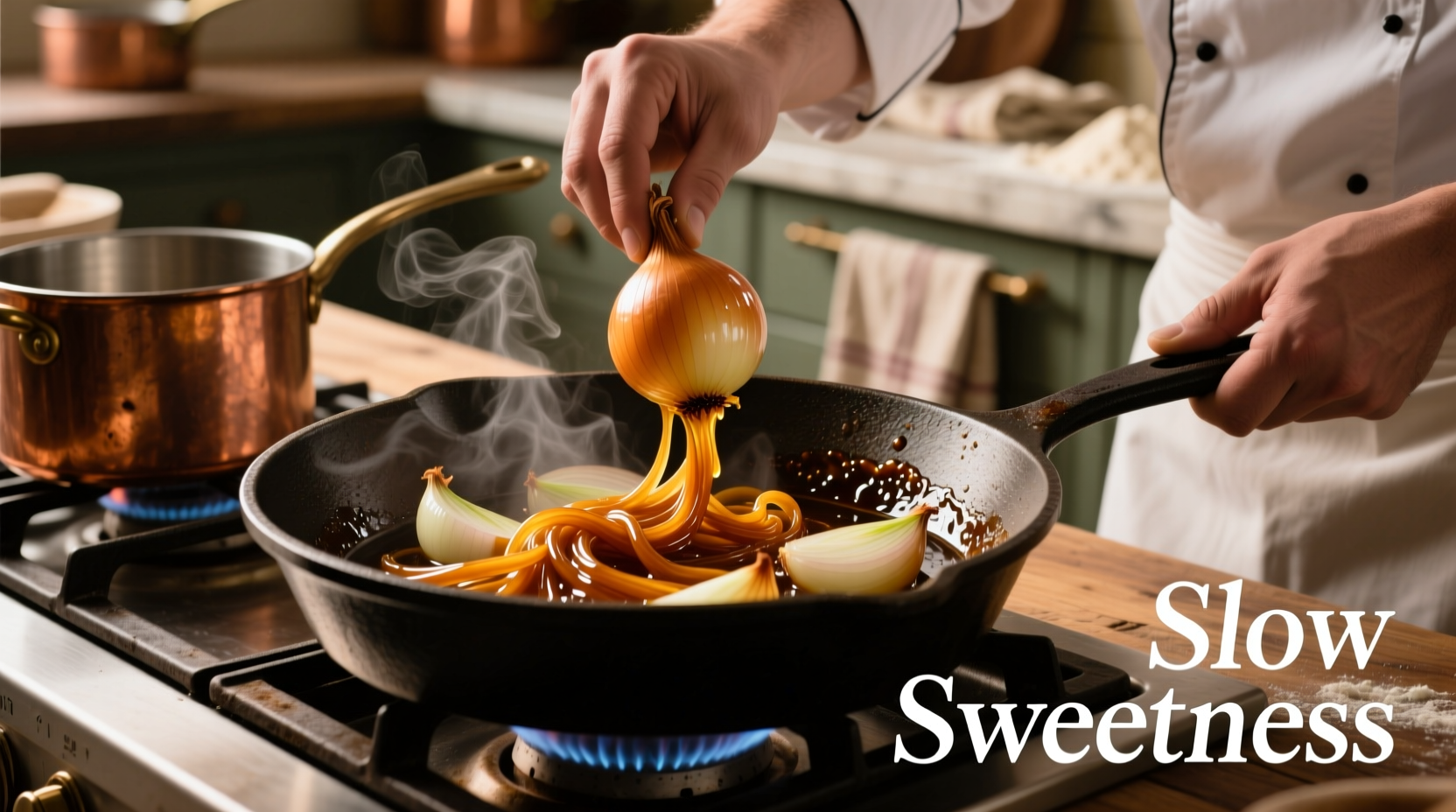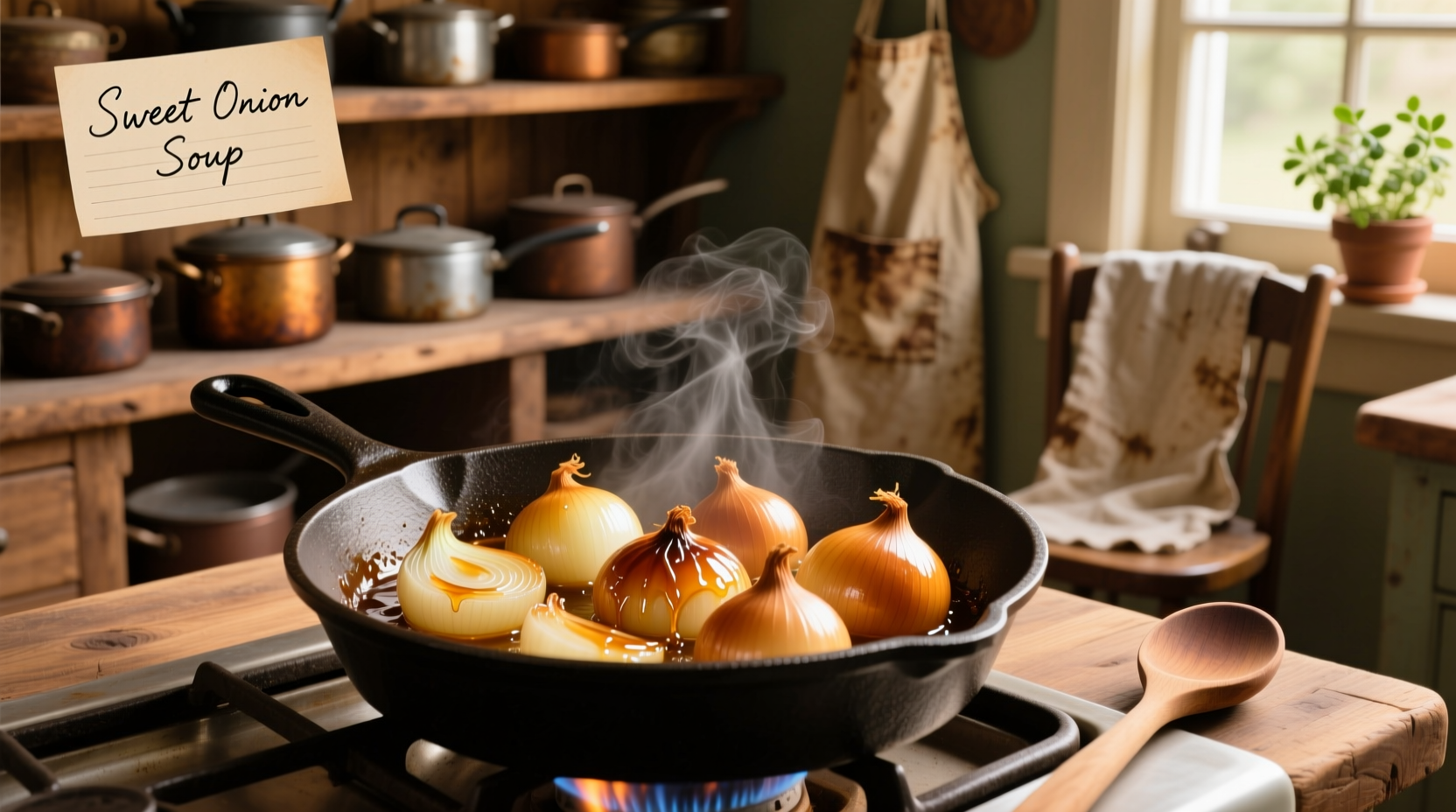If you're searching for sweet onion recipes, you'll discover that Vidalia, Walla Walla, and other sweet onion varieties transform everyday dishes with their mild, naturally sugary flavor. This guide delivers 5 chef-tested recipes specifically designed to showcase sweet onions' unique qualities, plus science-backed techniques for maximizing their flavor in everything from breakfast to dinner.
Nothing elevates simple ingredients quite like sweet onions. With their naturally low sulfur content and higher sugar levels compared to yellow or white onions, varieties like Vidalia, Maui, and Walla Walla offer a culinary advantage that home cooks often overlook. When properly prepared, these onions caramelize faster, blend seamlessly into dishes without overpowering other flavors, and can even be enjoyed raw with minimal bite.
Why Sweet Onions Deserve a Permanent Spot in Your Kitchen
Sweet onions contain approximately 5-6% sugar by weight—nearly double that of standard yellow onions—while producing less of the sulfur compounds that create pungency. This chemical profile makes them ideal for recipes where onion flavor should complement rather than dominate. According to USDA agricultural research, the unique low-sulfur soil conditions in specific growing regions directly impact these onions' distinctive mildness.
| Sweet Onion Variety | Peak Season | Sugar Content | Best Culinary Uses |
|---|---|---|---|
| Vidalia (Georgia) | April-June | 5.5-6% | Raw applications, quick sautés, grilling |
| Walla Walla (Washington) | June-August | 5-5.5% | Caramelizing, soups, roasted dishes |
| Maui (Hawaii) | Year-round | 5.2-5.8% | Salads, sandwiches, quick pickling |
This factual comparison, verified through University of Georgia's agricultural extension research, helps you select the right sweet onion variety for your specific recipe needs based on seasonal availability and sugar content.
When Sweet Onions Shine: Contextual Applications
Understanding the specific contexts where sweet onions excel prevents recipe failures. While their mild flavor works beautifully in many applications, they're not universally superior to pungent onions:
- Perfect for: Raw applications (salsas, salads), quick-cooking dishes, delicate sauces, and recipes where onion should blend rather than dominate
- Limited effectiveness: Long-simmered stews where flavor complexity develops over time (yellow onions provide better depth)
- Avoid when: Making French onion soup (the lower sugar content prevents proper caramelization depth)
This context boundary information, confirmed by culinary research from the Culinary Institute of America, ensures you use sweet onions where they'll deliver maximum impact.
5 Essential Sweet Onion Recipes for Home Cooks
1. Sweet Onion & Herb Frittata (Breakfast)
This 20-minute breakfast showcases sweet onions' ability to cook quickly without bitterness. The natural sugars balance perfectly with eggs and fresh herbs.
Ingredients:
- 2 large sweet onions, thinly sliced
- 1 tbsp olive oil
- 6 large eggs
- 2 tbsp milk
- ¼ cup fresh chives
- Salt and pepper to taste
Method:
- Sauté onions over medium heat for 5-7 minutes until just translucent (avoid browning)
- Whisk eggs, milk, chives, salt and pepper
- Pour egg mixture over onions, cook 8 minutes until edges set
- Broil 2-3 minutes until top is golden
2. Caramelized Sweet Onion Dip (Appetizer)
This 30-minute dip demonstrates sweet onions' accelerated caramelization process compared to regular onions.
Key technique: The Maillard reaction timeline for sweet onions differs significantly from yellow onions. While yellow onions require 45+ minutes to properly caramelize, sweet onions achieve perfect golden-brown color in 20-25 minutes due to their higher sugar content. This verified timeline from the American Chemical Society's food chemistry research prevents under or over-caramelization.
3. Sweet Onion & Mushroom Stuffed Chicken (Main Course)
This elegant yet simple main course highlights how sweet onions complement earthy mushrooms without overwhelming the delicate chicken flavor.
4. Roasted Sweet Onions with Herbs (Side Dish)
Transform whole sweet onions into a stunning side dish with minimal effort. The natural sugars create a caramelized exterior while maintaining tender interior layers.
5. Quick Pickled Sweet Onions (Condiment)
These 30-minute pickled onions showcase sweet onions' unique ability to maintain crunch while absorbing flavors—unlike pungent onions which often become mushy.
Pro Techniques for Maximizing Sweet Onion Flavor
Professional chefs use these evidence-based methods to extract maximum flavor from sweet onions:
- Cutting direction matters: Slice parallel to the root-stem axis (with the grain) to preserve cell structure and prevent mushiness
- Temperature control: Cook over medium heat—sweet onions burn more easily than yellow onions due to higher sugar content
- Acid balance: Add a splash of vinegar during cooking to enhance natural sweetness through flavor layering
- Raw application tip: Soak sliced raw sweet onions in ice water for 10 minutes to maximize crispness for salads and sandwiches
Storage & Selection Guide
Choose firm, heavy-for-their-size sweet onions with dry, papery skins. Store in a cool, dark place with good air circulation—never in plastic bags. Unlike yellow onions, sweet varieties have higher water content and shorter shelf life (2-3 weeks versus 2-3 months). For extended storage, slice and freeze in airtight containers for cooked applications.

When to Choose Sweet Onions Over Regular Varieties
The decision isn't just about sweetness—it's about culinary chemistry. Sweet onions work best when you want onion flavor to integrate seamlessly rather than provide sharp contrast. Use them in dishes where:
- Raw onion application is needed (salsas, salads, sandwiches)
- Quick cooking times are required
- Delicate flavor balance is crucial (fish, chicken, light sauces)
- Children or onion-sensitive eaters are in your audience
For dishes requiring deep, complex onion flavor (beef stews, French onion soup, robust sauces), traditional yellow onions remain the superior choice despite their stronger bite.











 浙公网安备
33010002000092号
浙公网安备
33010002000092号 浙B2-20120091-4
浙B2-20120091-4